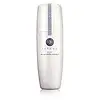What's inside
What's inside
 Key Ingredients
Key Ingredients

 Benefits
Benefits

 Concerns
Concerns

 Ingredients Side-by-side
Ingredients Side-by-side

Helianthus Annuus Seed Oil
EmollientCocos Nucifera Oil
MaskingPolyglyceryl-4 Oleate
EmulsifyingVitis Vinifera Seed Oil
EmollientHelianthus Annuus Seed Wax
Skin ConditioningPersea Gratissima Oil
Skin ConditioningSqualane
EmollientC10-18 Triglycerides
EmollientPhytosterols
Skin ConditioningBisabolol
MaskingHydrogenated Vegetable Oil
EmollientOlea Europaea Fruit Oil
MaskingGlyceryl Stearate
EmollientSorbitan Oleate
EmulsifyingTocopherol
AntioxidantAscorbyl Palmitate
AntioxidantTocopheryl Acetate
AntioxidantGlycerin
HumectantWater
Skin ConditioningLecithin
EmollientPentylene Glycol
Skin ConditioningHydrolyzed Rice Protein
Skin ConditioningOpuntia Ficus-Indica Stem Extract
Skin ConditioningCaprylic/Capric Triglyceride
MaskingXanthan Gum
EmulsifyingButylene Glycol
HumectantArginine
MaskingPhenylalanine
MaskingGlycine
BufferingLysine
Skin ConditioningSisymbrium Irio Seed Oil
MaskingPotassium Sorbate
PreservativeSodium Hydroxide
BufferingOligopeptide-4
Skin ConditioningOligopeptide-177
Helianthus Annuus Seed Oil, Cocos Nucifera Oil, Polyglyceryl-4 Oleate, Vitis Vinifera Seed Oil, Helianthus Annuus Seed Wax, Persea Gratissima Oil, Squalane, C10-18 Triglycerides, Phytosterols, Bisabolol, Hydrogenated Vegetable Oil, Olea Europaea Fruit Oil, Glyceryl Stearate, Sorbitan Oleate, Tocopherol, Ascorbyl Palmitate, Tocopheryl Acetate, Glycerin, Water, Lecithin, Pentylene Glycol, Hydrolyzed Rice Protein, Opuntia Ficus-Indica Stem Extract, Caprylic/Capric Triglyceride, Xanthan Gum, Butylene Glycol, Arginine, Phenylalanine, Glycine, Lysine, Sisymbrium Irio Seed Oil, Potassium Sorbate, Sodium Hydroxide, Oligopeptide-4, Oligopeptide-177
 Reviews
Reviews

Ingredients Explained
These ingredients are found in both products.
Ingredients higher up in an ingredient list are typically present in a larger amount.
Glycerin is already naturally found in your skin. It helps moisturize and protect your skin.
A study from 2016 found glycerin to be more effective as a humectant than AHAs and hyaluronic acid.
As a humectant, it helps the skin stay hydrated by pulling moisture to your skin. The low molecular weight of glycerin allows it to pull moisture into the deeper layers of your skin.
Hydrated skin improves your skin barrier; Your skin barrier helps protect against irritants and bacteria.
Glycerin has also been found to have antimicrobial and antiviral properties. Due to these properties, glycerin is often used in wound and burn treatments.
In cosmetics, glycerin is usually derived from plants such as soybean or palm. However, it can also be sourced from animals, such as tallow or animal fat.
This ingredient is organic, colorless, odorless, and non-toxic.
Glycerin is the name for this ingredient in American English. British English uses Glycerol/Glycerine.
Learn more about GlycerinWater. It's the most common cosmetic ingredient of all. You'll usually see it at the top of ingredient lists, meaning that it makes up the largest part of the product.
So why is it so popular? Water most often acts as a solvent - this means that it helps dissolve other ingredients into the formulation.
You'll also recognize water as that liquid we all need to stay alive. If you see this, drink a glass of water. Stay hydrated!
Learn more about Water